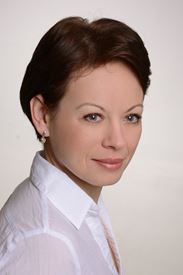Melinda Szitt studied at the Hungarian University of Physical Education and at the Hungarian Dance Academy where she acquired a Master's degree in classical ballet methodology. Since 2009 she has been teaching at the Hungarian Dance Academy in Budapest and from 2013 she teaches classical ballet methodology as a guest teacher at the Study of Ballet Pedagogy at the Academy of Dramatic Art, University of Zagreb.
The Methodology and Teaching Practice of Classical Ballet is based on the A. Vaganova system and includes teaching practice. The course includes planning, organising and conducting of the teaching of classical ballet to pupils from the first to the eighth level:
- body positions and posture, poses and positions of the feet and arms.
- gradual development of basic movements and steps.
- planning and conducting exercises at the barre, centre, jumps, turns, en pointe.
- music accompaniment.
- observation and teaching practice in a ballet school.
- preparation of exercises and writing of teaching plans.
- observation and evaluation of the teaching of other students and (self)evaluation.
The teaching content of the course in each year of study encompasses methodical approaches and content specific for a particular training period: elements of the first three years are taught during the first year; elements from the fourth to the sixth level are taught during the second year and elements of the seventh and eighth level of ballet dancers during the third year.
Objectives:
The course trains students to conduct the teaching of classical ballet according to the regular teaching programme for primary and secondary ballet schools. The teaching is conducted through theoretical-practical lectures and exercises and teaching practice; it involves planning, conducting and evaluating one's own teaching practice and the teaching practice of colleagues.
The objectives of teaching practice are in the practicing and perfecting the practical teaching skills through observation and discussions with mentoring teachers in ballet schools.



